^ that entirely.
Announcement
Collapse
No announcement yet.
tools to get to do a good DIY wheel alignment.
Collapse
X
-
Ok, what do we know about scrub radius? How does it affect these cars? I put the tires im getting into a wheel size calculator and it all looks good except my new setup will have roughly 7mm more positive scrub radius. The calculator assumes that oem is zero scrub radius, but i doubt that. Anyway, does anyone know what the oem scrub radius is and what making it 7mm more positive will do? Thanks.
(The fender/strut/ wheel well clearance were just very quick measurements in the dark with a flashlight in one hand)
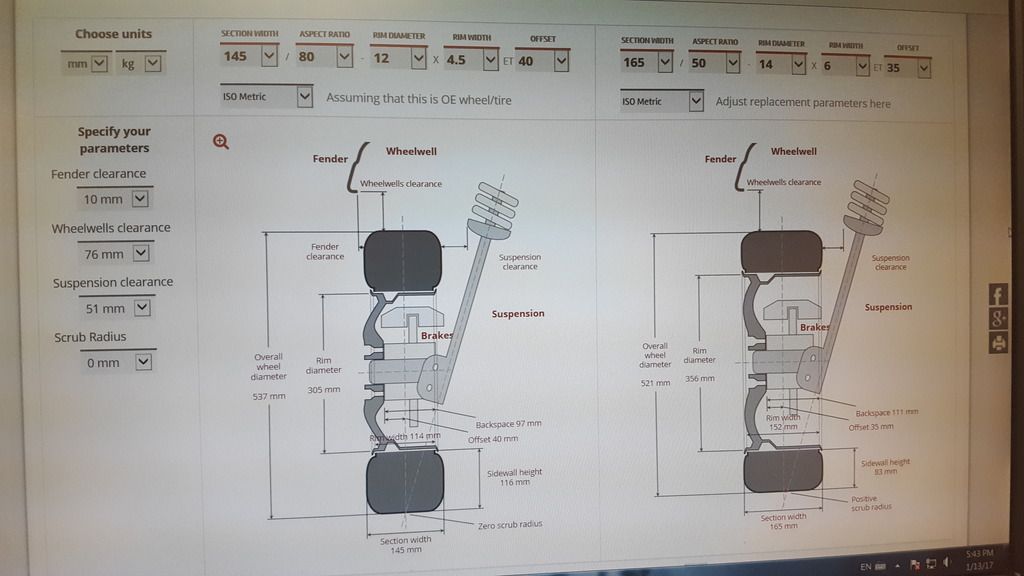
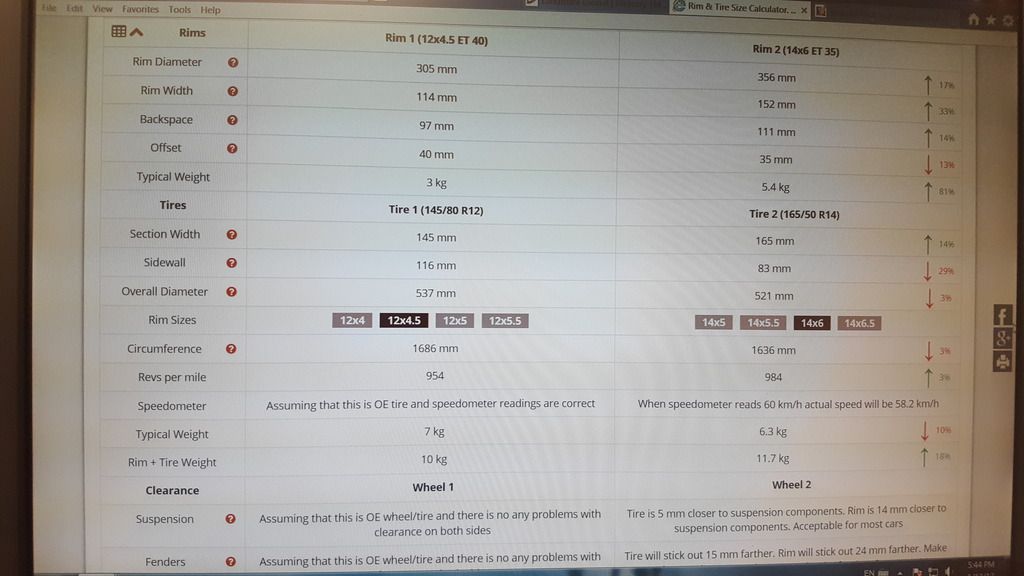
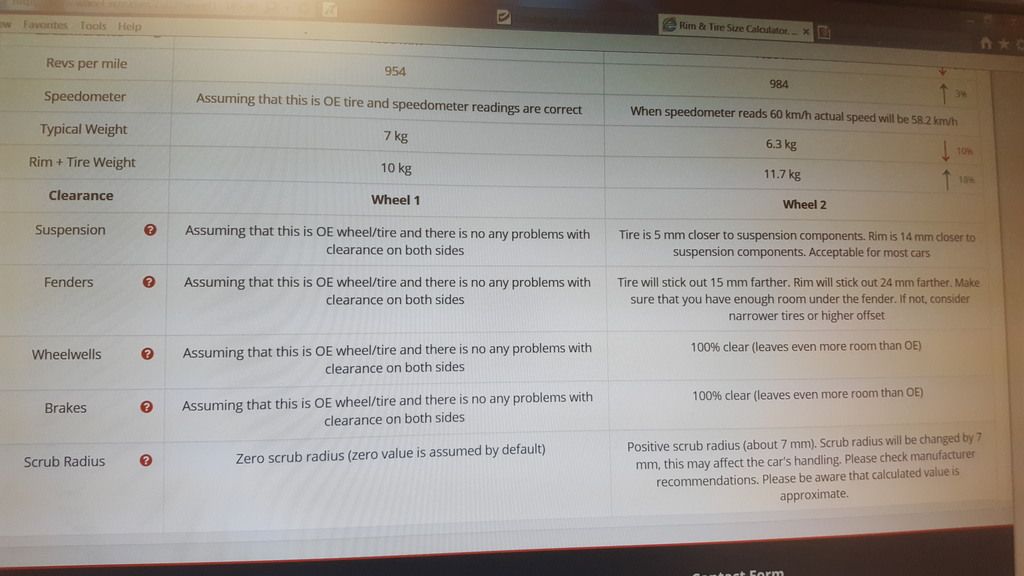
Ok! I can see how negative camber could improve straight line handling and rolling resistance, but how does it improve overall traction? The way it works in my head (which doesnt know much about this) is that your traction would be best with the load distributed evenly on the contact patch. If there isnt enough psi on the contact patch you need narrower tires. More than ideal psi on the contact patch you need wider tires.Originally posted by Advancedynamix View PostThat's just the most common group that you'll find discussing camber, but it's not the only place for this topic. I've found the factory settings to be less than ideal on a good portion of the automobiles that I've owned, even for daily driving. Want 5 more mpg, 15k more miles from your tires and better traction everywhere? Many cars can reap the benefits of better alignment optimization.
Negative camber is also helpful in a straight line. It improves traction and stability, while reducing rolling resistance.
Your estimate is a good starting point. You may not be able to get more than a degree of negative camber in the front with stock replacement struts though.
Toe is critical to tire wear, more so than camber. Camber is often blamed for tire wear, but it's the toe that causes the scrub and wears the tire in the spot of most pressure. Neutral toe drastically reduces tire wear and rolling resistance. Neutral toe without a good amount of negative camber may feel unstable and might tend to wander. The negative camber helps stabilize the car. Kind of like skiing. When your not on edge at all the skis wander around, but tilt your knees in a bit and you gain stability.
Not more than one degree even with notching the holes? :0 i wasnt expecting that...
I tried to replace a tie rod end with no alignment when i was 16. I know what toe does to tire wear, lol.
Thanks for that analogy, ill have to try that next time im skiing.
Haha, yes, i do not want toe out. I will set it to be toe in at rest so that the tires turn out a bit at full throttle while towing up hills to be about zero toe. If things feel a bit weird i will know to adjust for more toe in.Originally posted by Dragonhealer View Post^^ And if you have to be off a little, be off toe in, you won't have occasion to run toe out except in certain special circumstances, and that is hell on tyres!
Does anyone know or can anyone give an educated guess on how much the toe will change from being at rest not moving to full throttle 5.5k rpm going up a hill with a trailer holding you back? Polyurethane sway bar to rad support bushings and my control arms have about 25k miles on them so fairly new but the rubber bushings they came with. 4 Brand new tie rod ends, aspire knuckles if that makes a difference.
Thanks for all the help.
Sent from my SM-G920W8 using TapatalkLast edited by ryanprins13; 01-13-2017, 08:08 PM.
Comment
-
Why would you doubt that OEM would equal zero? I would think the designers would consider any scrubbing to be a design flaw, using the OEM tires and wheels as the baseline. They wouldn't want any scrubbing lock to lock."Blue92"- 92L 5 spd, original owner- 185K, B8,DD..
"Pedro"-88L 5-spd, B6D (built by Advancedynamix)
"Blanca"-92 GL auto, 125K(FM8 Lowest Miles)- B6 daughter's DD
"Tractor Blue"- 89 L auto, 110K
"Chester"-88 LX, runs but not street legal
"Wenona"-89L parts car
"Flame"- 89 LX 5 spd ,parts car
Comment
-
Scrub radius is not scrubbing... It's the measurement of overlapping center lines of strut angle and tire. The disparity between them at the contact patch is your scrub radius.Trees aren't kind to me...
currently: 2 88Ls (Scrappy and Jersey), 88LX, 90L(Pepe), 91L, 91GL (Skippy) 93 GL Sport (the Mighty Favakk), 94 (Bruce) & 95 Aspire SEs, 97 Aspire (The Joker),
94 Justy 4WD, 87 Fiero GT, plus 2 parts cars. That's my fleet.

Comment
-
That's all fine and good if you don't consider the physics of weight transfer. An automobile is not a static body, it's weight and inertia are dynamic and change with every input of the driver. To have a better understanding of proper setup, you must consider these dynamics.Originally posted by ryanprins13 View PostOk! I can see how negative camber could improve straight line handling and rolling resistance, but how does it improve overall traction? The way it works in my head (which doesnt know much about this) is that your traction would be best with the load distributed evenly on the contact patch. If there isnt enough psi on the contact patch you need narrower tires. More than ideal psi on the contact patch you need wider tires.
Negative camber allows a lighter car to utilize a wider tread patch without sacrificing contact patch pressure. Remember, while cornering, weight transfers to the outside tires. That means a tread width that was optimal going straight, is now insufficient while the car is leaning into a corner. That is why wider tires offer more cornering stability. However, changing tires between the straight and a corner is only something I've seen middle eastern stunt drivers do on YouTube. It's not practical. Negative camber is practical. It allows the car to have a narrow contact patch with high pressure in a straight line, and a wide contact patch for stability when the car is leaned into a corner.
The Festiva is a very very unique automobile. It is very light, yet can place extreme loads on its tires in corners. To put things in perspective, an 85mph corner in my prepared Porsche on R compound race tires is a 105mph corner in my Festiva on R compound race tires. A 20mph difference in a curve is amazing. These cars have the ability to put extreme loads on their tires.
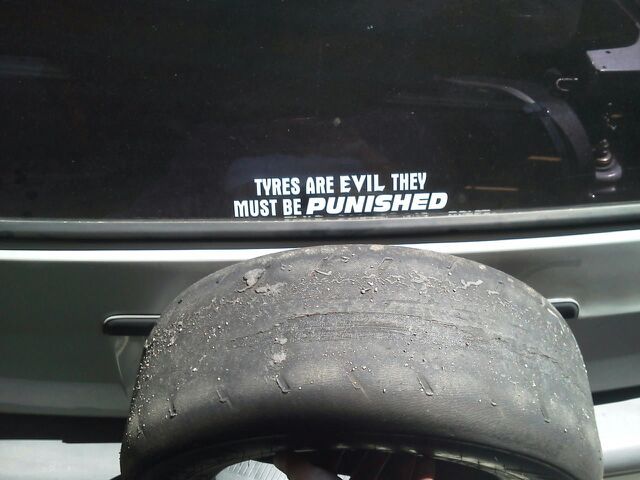
Notching the struts on stock/aspire/Rio/BF Mazda struts gives very very little adjustment because the knuckle hits the strut body. You can grind a little bit off the knuckle, where it his the strut body, bit there is still not much adjustment to be had. The VW mk2 strut bodies have considerably more room to move the knuckle. 5 degrees of adjustment can be achieved with the VW struts. Combine that with much better valving, and they are the best value in suspension tuning.Originally posted by ryanprins13 View PostNot more than one degree even with notching the holes? :0 i wasnt expecting that...
I tried to replace a tie rod end with no alignment when i was 16. I know what toe does to tire wear, lol.
Thanks for that analogy, ill have to try that next time im skiing. Last edited by Advancedynamix; 01-15-2017, 08:44 AM.Driving for me is neither a right nor a privilege. Driving is my passion, as it was for the people who invented the automobile, the people who paved the first roads and the people who continue to improve the automobile. Please respect this passion.
Last edited by Advancedynamix; 01-15-2017, 08:44 AM.Driving for me is neither a right nor a privilege. Driving is my passion, as it was for the people who invented the automobile, the people who paved the first roads and the people who continue to improve the automobile. Please respect this passion.
Comment
-
Another tool i just realized you need to set your rear camber and toe is grade 12 math...
Anyone have a formula for how to calculate how far the outside of your tire will move for a given amount of degrees on your alignment shim?
Kinda like 'x' amount of change in thickness or degrees on your shim will result in 'x' amount of movement at the front of the tire type of formula.
Thanks.
Sent from my SM-G920W8 using Tapatalk
Comment
-
Too tired to do the math, but on a 17"tire,framing square on the ground with the vertical leg touching the lower bulge of the sidewall, 1 degree negative camber will measure aproxamately .270" gap between the vertical leg of the framing square and the upper sidewall bulge.
Tom, can you chime in? I don't even have sine tables here at the track.Last edited by Dragonhealer; 03-18-2017, 02:09 AM.No car too fast !
Comment
-
tools to get to do a good DIY wheel alignment.
You have to brush up on your trigonometry. It's actually 10th grade geometry or 5th grade when my mum was 10 years old and didn't have a calculator [emoji15]Last edited by moz; 03-18-2017, 04:39 PM.1988 MAZDA 121- B6T + G5MR SWAP IN PROGRESS.
Comment
-
-
So i cant get good readings from my angle cube and its really bugging me. Can anyone tell me what i'm doing wrong?
I level the car with a laser level. Park it on my shims and make sure the laser is at the same hight at the outside centre of each tire.
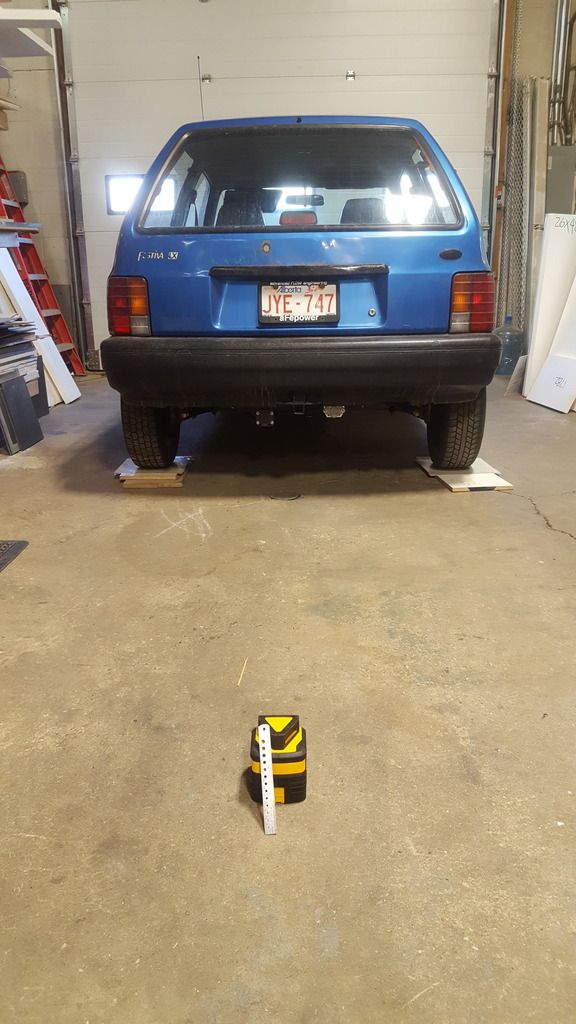
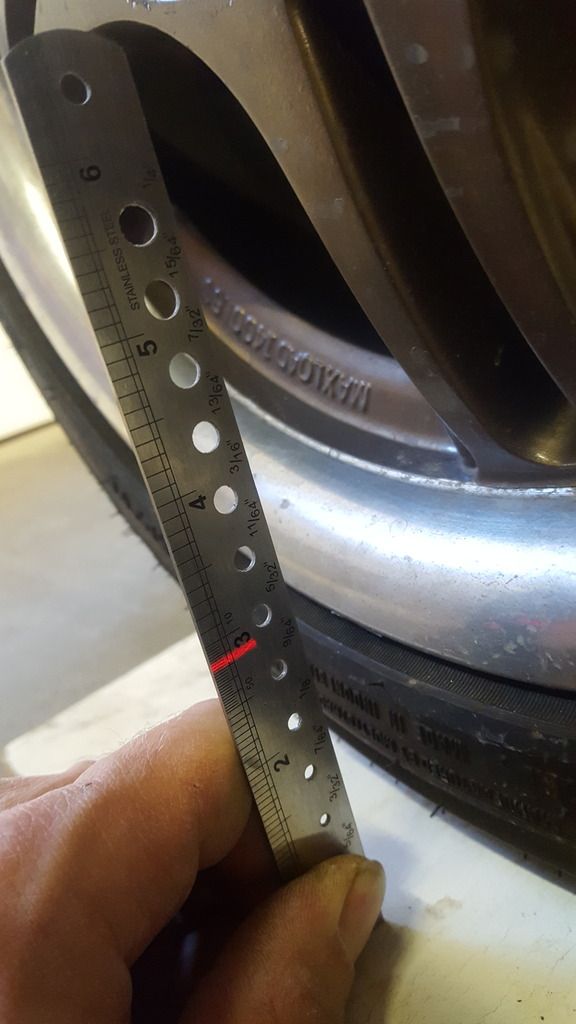
Then i take this straightedge (i have 2, same issue with each) and rest it on the rim as perpendicular to the floor as i can carefully eyeball it.
Set the angle cube on it and take a reading. Leave the straightedge in the exact same spot and flip the angle cube to the other side and the reading is different.
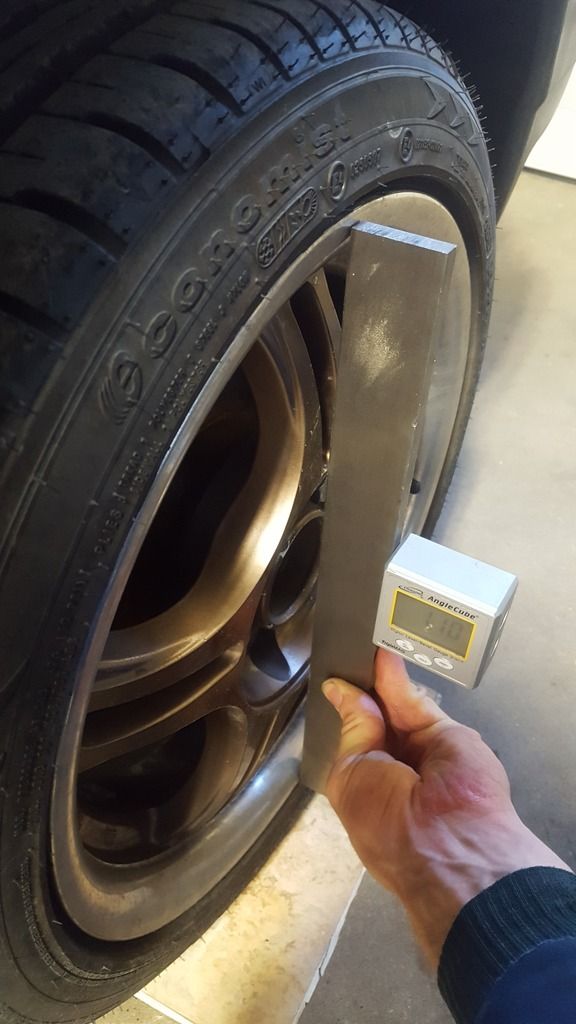

It happens every time, and basically is the same difference every time. When i first got it it read 0.7-0.9 degrees different on each side.
I recalibrated it last week, it was quite a bit off. tried again today and it reads 0.2 degrees different each side every time. Its quite frustrating. Any help?
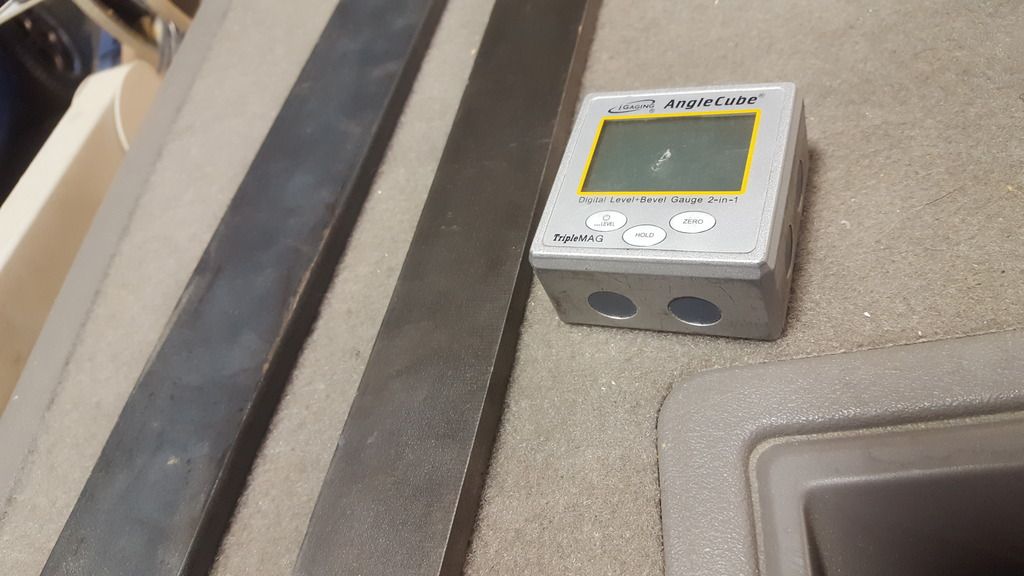
Sent from my SM-G920W8 using Tapatalk
Comment
-
I guess that is what it says on the box. Accurite to +-.2 and repeatable to +-.1Originally posted by joeboomer999 View PostCan't fully comment as don't own one myself but they are always advertised as having 0.2 accuracy, which would fit with your 0.2 fluctuations after calibration ?
Im thinking somethings wrong with the internals. Once i calibrated it then it should read correctly even if the sides werent quite parallel.
I know other people on the forum use the cube and i was hoping to hear if this is common or if mine is out more than most or something.
If i go all the way around the car twice i get the same readings the second time on both sides of the cube. Always .2 deg different for each side of the cube though.
So its 100% repeatable now it seems, but .2 deg out each side.
Sent from my SM-G920W8 using Tapatalk
Comment

Comment